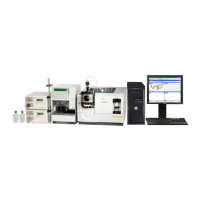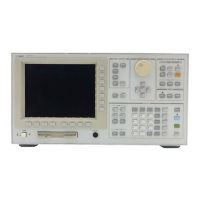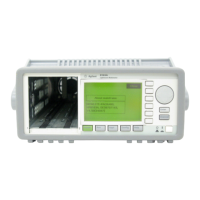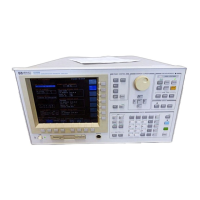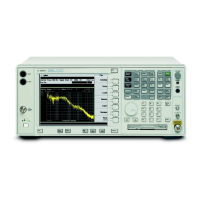Comments for ARBSRC (continued)
420 - 540 Verify that a legal resolution value has been selected. An error message appears if an illegal
value is selected.
570 Allocate space for the tone data that will be loaded into the data register.
590 Compute the delta t (D) between time points in the tone data.
600 - 640 Compute the tone data for two tones. SIN(2*PI*Tones(T)*I*D5) generates a time
waveform for a tone. The first time through the loop generates time data for the first tone.
The second time through the loop, adds in time waveform data for the second tone.
670 - 710 Setup a display window.
670 - 680 If the program is running in Instrument BASIC on the analyzer, set the display format to
QUAD. Print to the lower half of the display.
700 If the program is running on an external controller, set the display to UPPER/LOWER format.
730 - 750 Print the first ten values in data register D1.
780 The data block format (FORMAT:DATA) is 64-bit binary.
810 Display Channel 1 time data in trace A.
860 Store Channel 1 time data in data register D1. The data register contains real data because we
saved baseband time data (start frequency = 0) in the data register.
Before a data register can be loaded with new data from GPIB, the register must be initialized so
it can accept the proper amount and representation of data. Use the CALC1:FEED command to
set the trace data to the type of data you will be putting in the data register, then save the trace into
the data register using the TRAC:DATA command.
890 TRAC:DATA D1,#0 uses the indefinite length block to load the data into data register D1. The #
identifies the data as block data, the “0” after the # indicates the indefinite length block. the last
byte of the output is a new line character sent with END.
900 Output the data in binary.
910 Output a line feed with EOI (new line) at the end of the data block.
Example Programs
ARBSRC
F-6
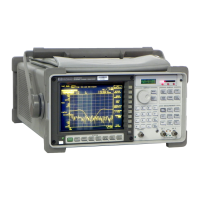
